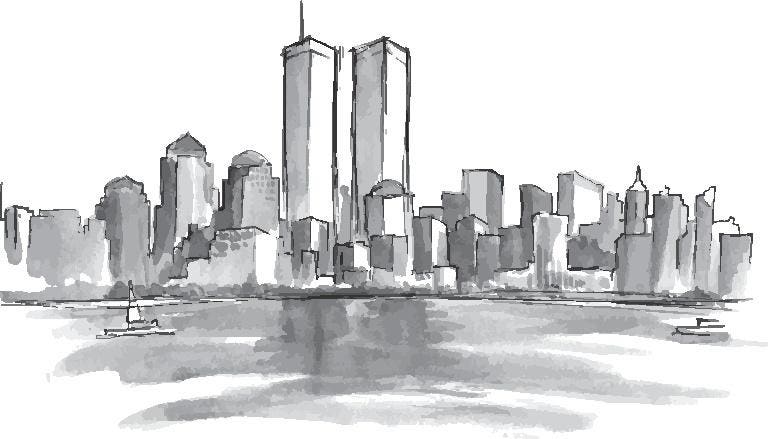Today is September 11, 2023.
Twenty-two years ago today, I watched with astonishment as planes plowed into the World Trade Center. Then, I closed my offices so everyone could go home, and walked up the middle of Madison Avenue, without a car in sight, to return to my apartment. Even from East 78th Street, we could see the smoke billowing skyward.
That was the end of real estate sales for that year. Many of our buyers dropped out of their deals and left town. I told my agents that our role for the remainder of the year was to serve as a Chamber of Commerce for New York — re-emphasizing, over and over, our faith in the city and our belief in its return. And, in January of 2002, the market caught fire, rising aggressively every subsequent year until 2008, when, once again, our failure to learn economic lessons from the past tanked our economy.
That, in a nutshell, describes the past 20 years in our [real estate] business: precipitous increases followed by equally precipitous declines.
Today, our Manhattan properties are selling for about what they did in 2005, or in 2012. Brooklyn, of course, is a different story, as it has increasingly become the place where Gen Xers, and those coming up behind them, want to live. These days, we in the business like to joke that Upper East Side co-ops have become a value play!
These decades have been anomalous in the long history of postwar real estate sales here in New York. Although there have been dips, the value trend since 1950 has been almost uniformly up. In today’s market, however, multiple uncertainties have removed many buyers to the sidelines.
The Fed rate is at a 20-year high, thus increasing mortgage prices — which not so long ago rested below 3% — to more than 7%. For home buyers, this creates a double whammy: Not only does their mortgage cost more than twice what it would have a few years ago, but there is very little for them to buy, since homeowners with a 2.75% mortgage are more likely to remodel than move and double their financing costs. The political landscape is highly polarized and every sane person acknowledges the dangers of climate change to low-lying coastal cities like New York. Anxious people do not make for eager buyers.
That said, home ownership remains a lynchpin of the American Dream. But since 9/11, little progress has been made in expanding the constituency of Americans to whom that dream is available. As the Supreme Court rolls back affirmative action and abortion opportunities, primarily impacting the poor and people of color, our population of New York City buyers remains stubbornly white. People of color continue to experience discrimination at the hands of real estate agents, while the agents themselves, a predominantly female population, continue to suffer sexual harassment at the hands of managers and trade organization officials. Further, while 9/11 marked a time when terrorism seemed a foreign import, events over the last ten years have shown it much closer to home, in Buffalo or Pittsburgh or Orlando, not to mention in the halls and chambers of the Capital.
Read the full article here



